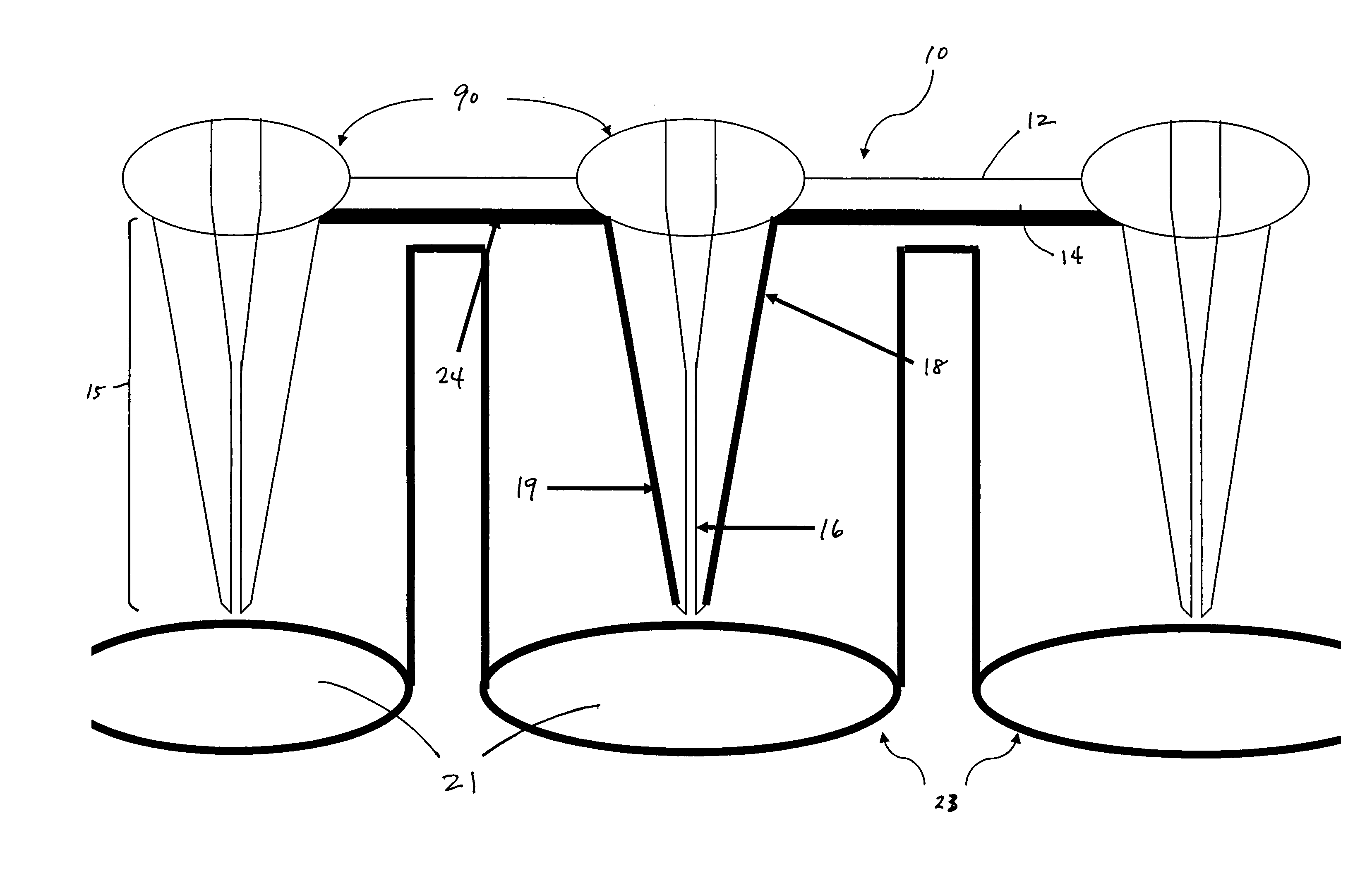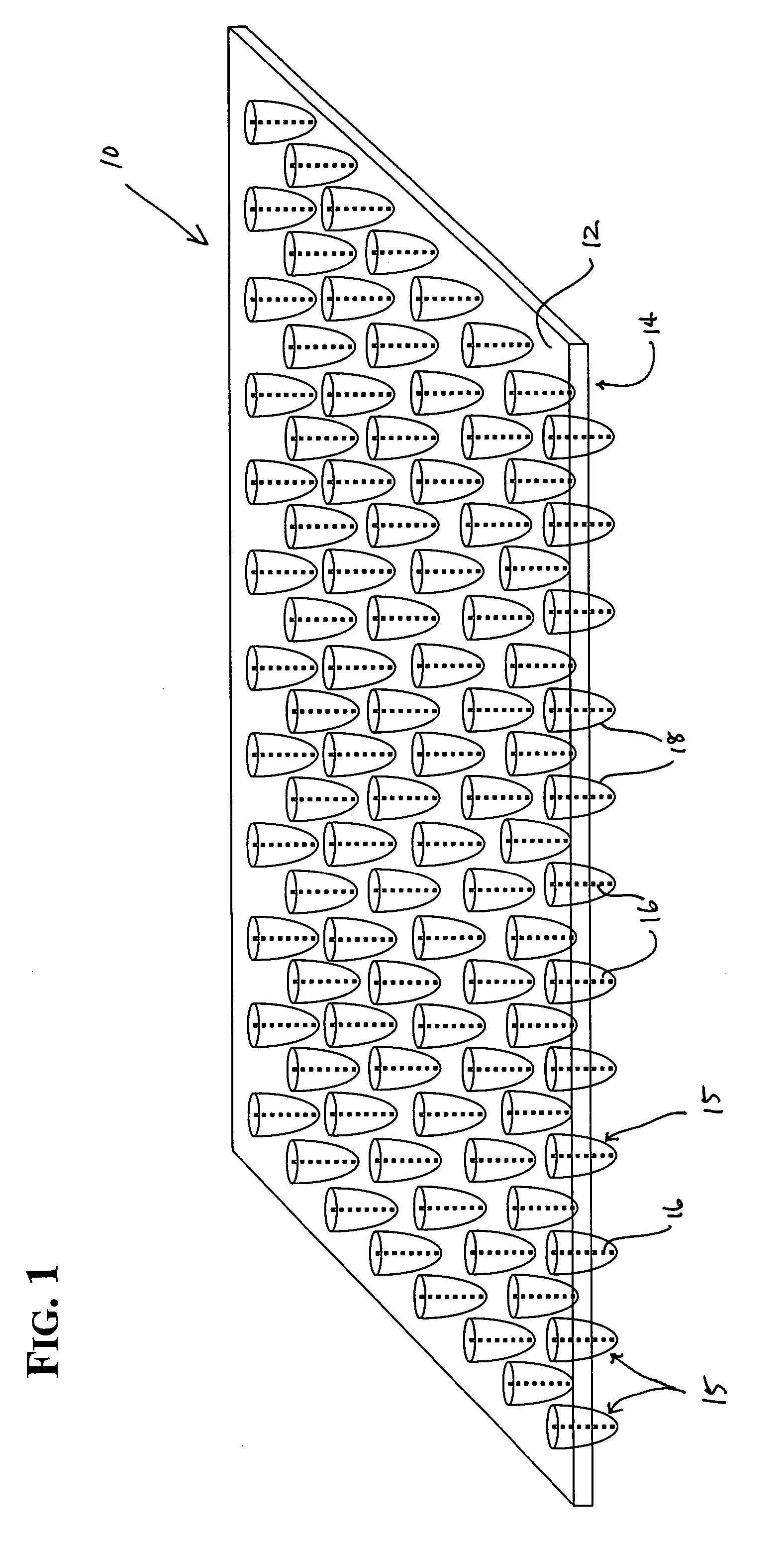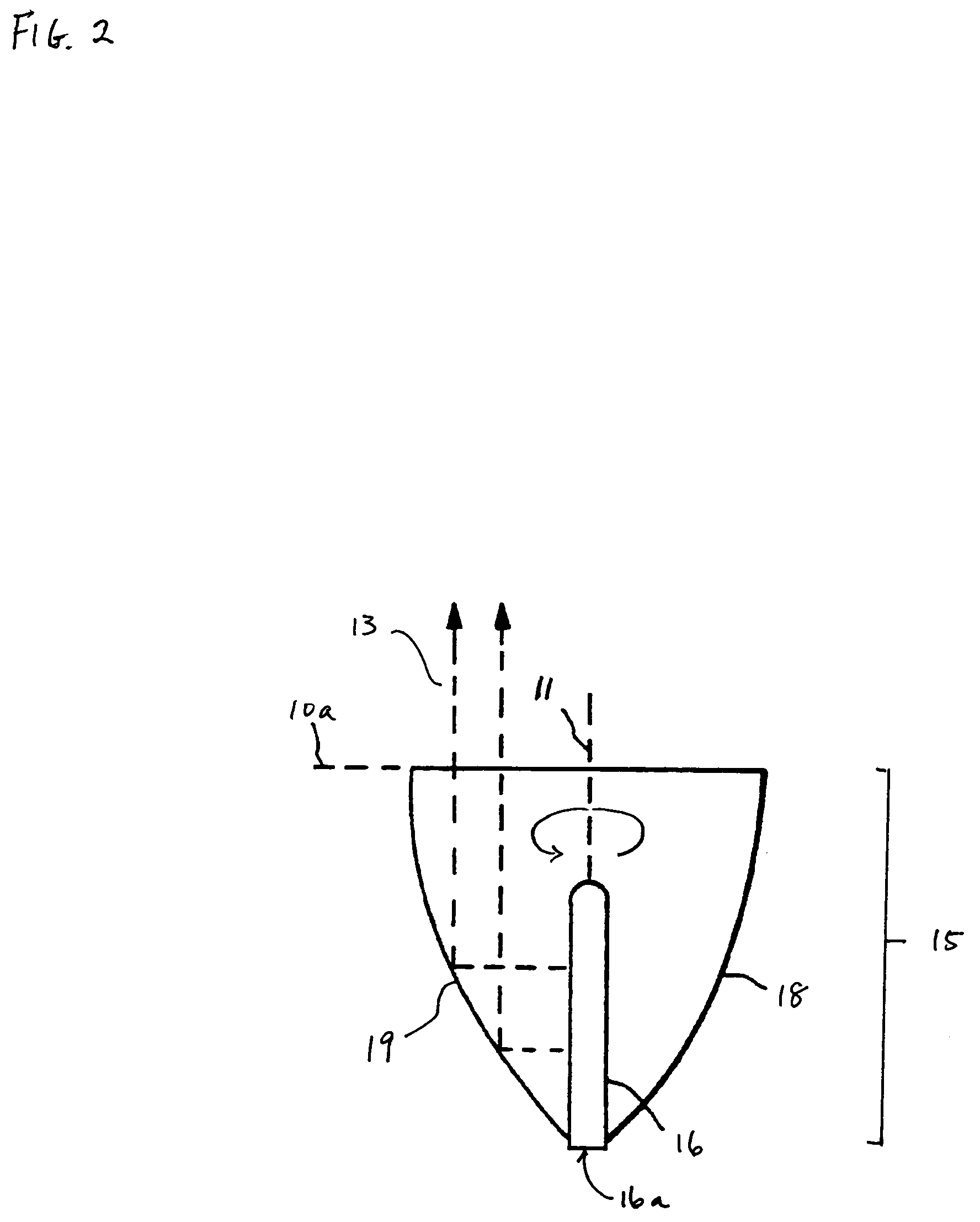Capillary assay device and method
a capillary assay and assay technology, applied in the direction of fluorescence/phosphorescence, luminescent dosimeters, optical radiation measurement, etc., can solve the problems of reducing the volume of assays to microliters, changing the concentration of reagents in solution, etc., to reduce evaporative loss and improve optical signal detection
- Summary
- Abstract
- Description
- Claims
- Application Information
AI Technical Summary
Benefits of technology
Problems solved by technology
Method used
Image
Examples
first embodiment
[0059] individual collectors are situated preferably in a rectilinear grid, spaced on-center to correspond with the wells of a microplate of industry-standard dimensions (e.g., 96, 384, 1536 well matrix) and other irregular configurations. When used as a lid for a microtiter plate, assay reaction components can be dispensed into microplate wells as usual. Each collection structure is inserted into a corresponding well 21 of the plate 23 containing a fluid or aqueous assay solution, such as in FIG. 12. The embodiment illustrated in FIG. 1, for example, is tailored to nest within a 96-well plate. The solutions are drawn up the capillaries if the tip of the projection is in contact with the solution. When using a solution of very low fluid volume, one may wish to compress the device against the microplate 23 to ensure each collector and capillary 16 contacts the solutions and fills the capillary. In such situations, an elastomeric layer 24 that is situated against the second or lower s...
second embodiment
[0060]Alternatively, the device can be used independently of the microtiter well plate. If an upper opening for a capillary extends through to the first or upper surface of the platen, fluids or reagents can be dispensed directly into the capillary from the top of the platen, enabling the device to be used in likewise fashion but without a microplate. In a hybrid technique, one may first prepare a well plate with solution or samples, insert the collector and capillary end into the sample, then remove and read the signal separate from the well plate.
[0061]In either embodiment, fluid in the capillary can be emptied or forced out using vacuum, centrifugation, or air pressure. The capillaries can then be readily refilled in a short time, and the desired assay procedure may be repeated. Conventionally, entrapment of air bubbles is also problematic in small diameter wells. This issue is not a problem in the present device since a capillary can be open at both ends. When solution fills th...
PUM
| Property | Measurement | Unit |
|---|---|---|
| conical angle | aaaaa | aaaaa |
| thickness | aaaaa | aaaaa |
| thickness | aaaaa | aaaaa |
Abstract
Description
Claims
Application Information
 Login to View More
Login to View More - R&D
- Intellectual Property
- Life Sciences
- Materials
- Tech Scout
- Unparalleled Data Quality
- Higher Quality Content
- 60% Fewer Hallucinations
Browse by: Latest US Patents, China's latest patents, Technical Efficacy Thesaurus, Application Domain, Technology Topic, Popular Technical Reports.
© 2025 PatSnap. All rights reserved.Legal|Privacy policy|Modern Slavery Act Transparency Statement|Sitemap|About US| Contact US: help@patsnap.com



